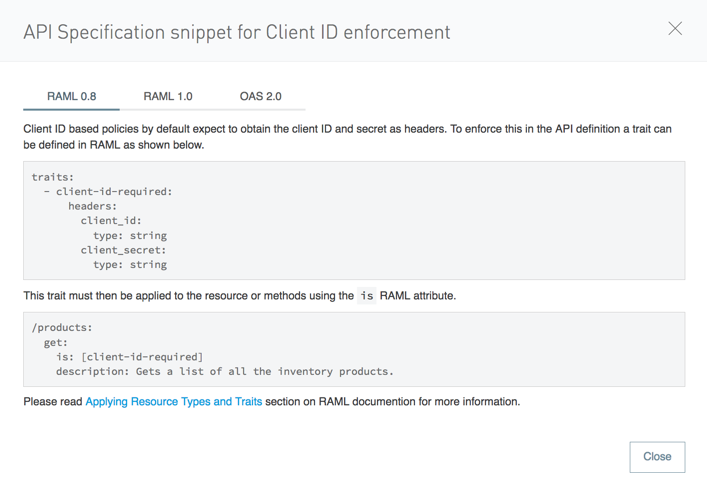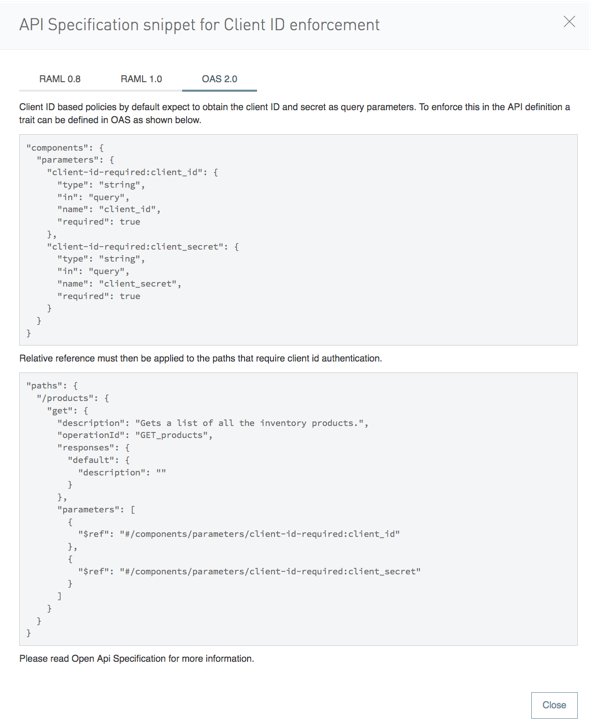traits:
- client-id-required:
queryParameters:
client_id:
type: string
client_secret:
type: stringTraits & policies concepts of RAML/OAS based APIs
If your API exposes a RAML or OAS definition that users might need to reference, then the API definition should reliably detail every element that is expected in calls to your API.
For example when applying a client ID-based policies implies that all requests coming to your API include a client ID and client Secret (by default expected as query parameters). To prevent user requests from being rejected, create a trait in the RAML root and then reference this trait in every operation of your API. The trait might look like this:
And then you can apply this trait in each individual operation like this:
/products:
get:
is: [client-id-required]
description: Gets a list of all the inventory products.Getting Policies Specification Snippets
-
Click Policies on the API dashboard.
In the list of policies, the RAML snippet link contains the RAML trait or OAS components you need to add to the API specification.

-
Click API Specification Snippet.
-
Select the API type to match your specification:
-
RAML 0.8 or RAML 1.0 to match the API RAML version.

-
Or OAS 2.0 to match the API OAS version.

OAS Snippets are not displayed for all policy versions.
See the table below to see the policies and the versions that display their OAS snippets:Policy Version Rate limiting - SLA based
since v1.1.2
OAuth 2.0 access token enforcement using Mule OAuth provider
since v1.1.3
OpenAM access token enforcement
since v1.1.3
OpenId Connect access token enforcement
since v1.1.3
PingFederate access token enforcement
since v1.1.3
Client ID enforcement
since v1.1.3
-
-
Edit the API to add the code.
-
Redeploy the API.



